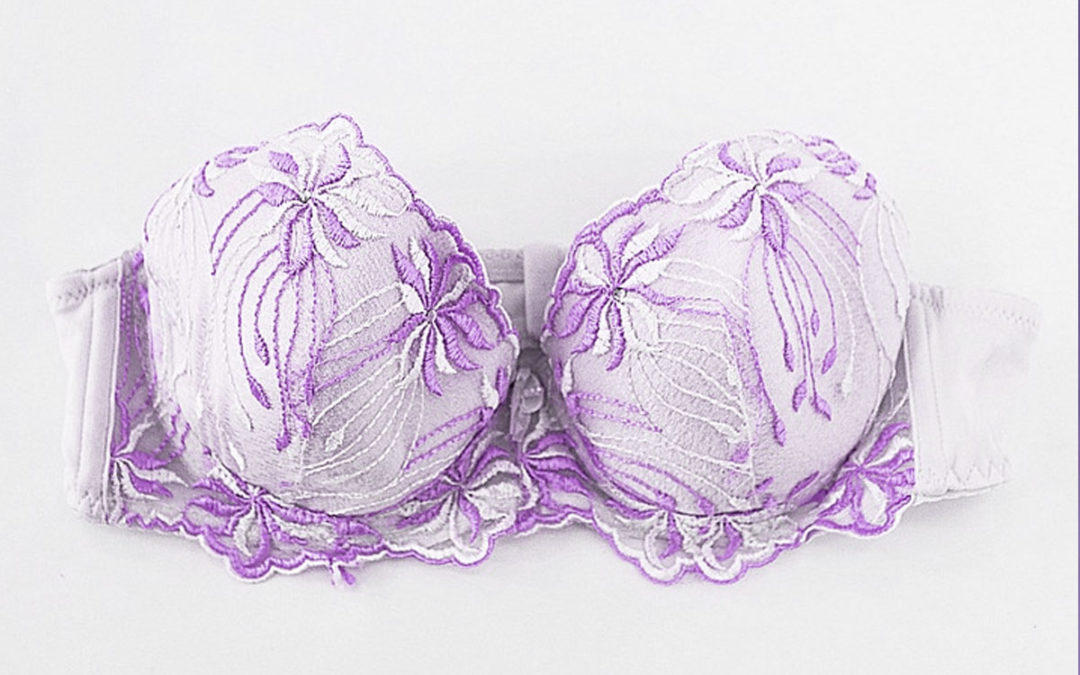It‘s time to uncover an area of a woman‘s life that few consider a problem. That is DRESS: a woman‘s secret weapon! Aiming at the breasts, we will expose the under and outer garments, beauty and hygienic products, and show how women daily pull the trigger on their health – some knowingly, others unknowingly. Millions of dollars are spent each year in America, even now in other parts of the world, urging women to buy this or that clothing, or insisting on the need for certain cosmetics. When it comes to clothing or cosmetics, namely, fashion, everyone‘s got an opinion. While many focus on these fashions, few understand, or even think about the health implications. Years back, when someone was dressed fashionably, a compliment was made to that person saying, ―You are dressed to kill! Surprisingly, little did the person know that statement was aligned with truth!
Women who wish to pay proper regard to their health must give attention to their dress. Not only the clothing they put on, but the various toiletries and cosmetics used for feminine hygiene and to enhance beauty. Healthy dress permits every organ in the body to perform its functions undisturbed. No garment worn should ever be allowed to interfere with entire freedom of movement, or with the natural action of any bodily organ, or with the perfectly free circulation of the blood. The general rule of dress is to have all garments as loose in fashion as is consistent with bodily comfort, and allow the most perfect freedom in the exercise of every muscle of the body. On the other hand, dress should be used to moderate the extremes of heat or cold, according to the climate of the wearer and the weather.
Clothing, therefore, which the usages of society, and the severity of climates render indispensable, should as an invariable rule, be loose as possible without bodily discomfort. Women must learn to see the danger, if not the hideousness of going against this principle. A statement by a favorite author, Ellen G. White set forth a concept
regarding women diseases. “Half of the diseases of women are caused by unhealthful dress.” Healthful Living, page 123.
Health should be the paramount law of dress; comfort should always coincide with health. To the eye of an intelligent observer, nothing should ever be looked upon as beautiful, that proves to be offensive and interferes with either. By a contrary arrangement, women still choose to dress fashionably, no matter how dangerous it
may prove. More consequences are now attached to figure and form than to health and comfort.
On the other hand, some women are on the right tract regarding their dress, but there is still a lot to be learned. Armed with the necessary tools, they would be better prepared on what to look for and wear. More significantly, the core of the matter covers the deeper paths of dress. It may take a while for some to sit down and say, ―out of sight, ―out of mind does matter, especially when what‘s underneath can make all the difference.
Let‘s start with something familiar to women — the brassiere, also known as the ―bra. It is an undergarment worn to cover women‘s breasts. Its origin can be traced back to the early 1900‘s. However, during that time, a more prevalent undergarment was being worn — the corset. As a result of health concerns and warnings against the wearing of corsets, warnings posed by tight clothing, were beneficial in putting an end to the corset, or were they? Many women today might be shocked to know, they could be wearing the corset’s descendant every day, in the form of the modern bra. The metal under-wire of a bra and the clasps and straps that keep it in place evolved directly from the stays and clasps of corsets. What links them both together is— they are seen as an essential undergarment, and the same kind of support is offered. It‘s a thought to ponder.
Since the bra‘s inception, its revolving evolution has made its way into society, in the name of fashion. There are several different types of bras worn for different purposes. You have the ―training, ―sports, ―push up, ―under-wire, ―strapless, ―long line, and ―18 hours just to name a few. Hold tight! In the name of fashion, a certain amount of suffering is borne by women when they wear the bra. It may be gentle to the breasts, but hazardous to your health. The hazards –it hinders the circulation of blood and drainage of the lymphatic vessels; worn tightly, it inhibits normal breathing; its tension causes modification of the body; and it locks away the breasts, in a laced-up confinement.
It is an obvious physiological fact, that the chest should have free room to expand itself, and allow the lungs to fill with air. The breathing should meet no resistance from what is worn on the body. The circulation of the blood in the breasts must be perfectly free from any constraint, and for these reasons any garments that press down on the breasts are harmful. Therefore, the physical consequences of these hazards affect the health immeasurably.
For breast support, let‘s look at the bra‘s role, and the purpose it serves. Unknowingly by many, the breasts were made to ―self support. Before fashion authenticated the wearing of the bra, women were actually better off retaining the similitude with which the Creator molded them in, rather than the destruction of beauty and life through its ever changing styles.
The main purpose in the design of the bra was not to support the breasts. Instead, it was to accentuate or provide a reducing effect for the sake of sexual appearance. Many full figured and heavy breasted women might say that to go ―bra-less could be painful, uncomfortable, and unacceptable. Yes, some physical discomfort may be experienced. However, we must recall that comfort is very much a matter of habit, and does not make a proper discrimination between the natural sensation of health and the morbid sensitiveness produced by false customs.
On the other hand, small breasted women often use bras that are padded in various ways to make the bust seem larger or more elevated. Padded or contour (lightly padded or lined) bras lead to congestion of the breasts and a higher incidence of disease. (They also bear ―false witness.) You will do well to recognize the value of the counsel that advises,
“Because it is the fashion, many females place over their breasts paddings (bras), to give the form the appearance of well-developed breasts. These appendages attract the blood to the chest, and produce a dry, irritating heat. The veins, because of unnatural heat, become contracted, and the natural circulation is obstructed. These appendages, in connection with other bad habits of dressing and eating, result in obstructing the process of nature, making a healthy development of the breasts impossible. And if these become mothers, there cannot be a natural secretion of the fluids, to have a sufficient supply of nourishment for their offspring.” Health Reformer, September 1, 1871.
The point in all of this is that at the expense of covering up their breasts, too many women are sacrificing their health. It boils down to, without evidence of the reassuring qualities of the bra, women still are persuaded to take unhealthful cover continuously. Unfortunately, custom and habit have a great influence in the lives of many today.
As a custom, and for some time, women have worn the bra for comfort and protection. At night, the bra goes to bed with most women, and the breasts are secure. So you think. Instead, sleeping with a bra on is a very risky habit. Not only are the breasts constricted, but the circulation of blood and lymphatics is lessened.
Another risky practice is the selection of an incorrect ―cup size, which squeezes the breast tissue and hinders lymphatic drainage. For a quick measurement, slide two fingers under the shoulder straps and the side panels. If the bra is the right size, the fingers should easily slide under it. Wrinkles in the bra, signifies the wrong size. An indicator to use, in the event of discomfort when wearing the bra, is how you feel hours afterward. When the breasts are at their largest and are most tender, the selection of different bras offers relief, during those special times of the month. To keep in tuned with the breasts and the need for much relief, maybe you can find peace in the following:
• Do not sleep with the bra on. ―Give the breast a rest!‖
• Select a bra agreeing with the right cup size, to avoid the ―cup running over.
• If the bra leaves red marks or grooves on your skin, it‘s too tight and should be ―let loose.
• During menstrual cycle, wear a different size bra to accommodate the ―changing times.
To sum it up, although a woman uses a thing and likes it, even though she may have used it for years without any apparent injury to herself, that is no proof that it is not an injury to her. A trend, that if we are not careful, this thought can be carried to other lengths which can prove detrimental to the health.

